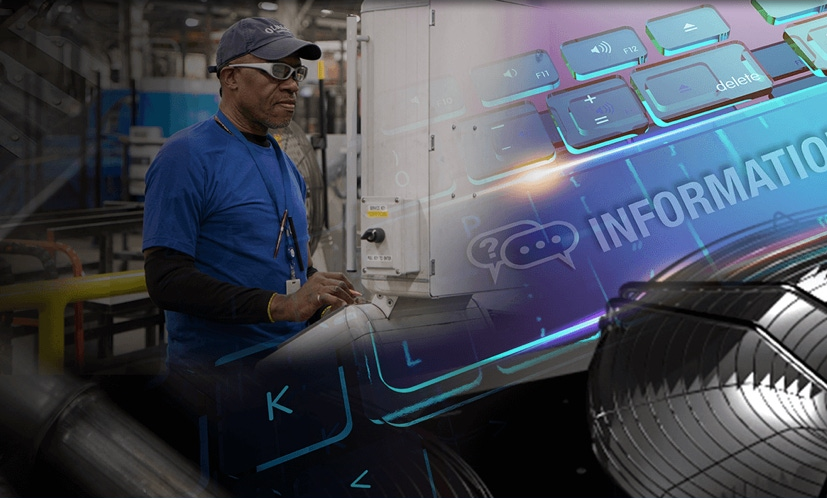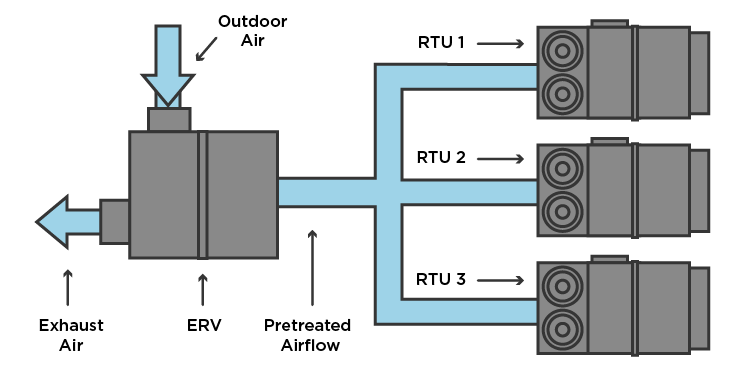

NEWS
VALENT ROOFTOP UNITS PAIR UP FOR ENERGY EFFICIENCY
Valent’s performance rooftop unit (RTU) can be combined with an energy recovery ventilator (ERV) or dedicated outdoor air system (DOAS) to reduce energy costs. Pairing two different units improves indoor air quality and allows the RTU to leverage its modulating capabilities and focus on conditioning outdoor air.
RECOVER ENERGY TO REDUCE LOADS
Valent ERVs capture both sensible and latent energy from the exhaust airstream and transfer it to the return airstream to reduce the load of tempering and dehumidifying the air. They can use either a low-maintenance enthalpy core with no moving parts, or a compact and highly efficient enthalpy wheel.
Energy recovery is required by the International Energy Conservation Code (IECC) and ASHRAE 90.1 standard when supply airflow exceeds 5,000 cfm and ventilation is at least 70% outdoor air. This applies to most U.S. jurisdictions, climate zones, and types of commercial buildings.
Even when energy recovery is not required by a local code or standard, there are good reasons to use it.
In hot and humid climates, it reduces the cooling and dehumidification loads.
In cold climates, energy recovery reduces the heating loads.
Utility companies and jurisdictions often give rebates and incentives for using energy recovery to improve system efficiency.
COMBINE ENERGY RECOVERY VENTILATORS WITH ROOFTOP UNITS
Adding an ERV to the rooftop improves indoor air quality (IAQ) by ventilating with 100% outdoor air and reduces energy consumption from RTUs by pretreating incoming air using the energy from exhaust air.
Combining an ERV with multiple RTUs is a common and cost-effective configuration for scaling up air supply. Let’s look at an office building in Wisconsin in July (summer application) as an example.
Hot, humid outdoor air enters the ERV, which dehumidifies the air with energy transferred from the return airstream. The return air becomes exhaust air. The pretreated air then flows to multiple RTUs through ductwork.
The RTUs cool the air further and then supply it into offices. Return air is also recirculated with the supply air. The work done by the ERV reduces the cooling load for all three RTUs by about 50%.
USE DOAS TO RECOVER ENERGY
Valent DOAS units can also provide conditioned 100% outdoor air and the same cost-saving energy recovery options found in ERVs. Depending on the application, they can be an efficient alternative to combining an ERV with RTUs, or they can be used in the same building. Taking the same office building example, while the RTUs are cooling and ventilating a multi-zone application such as a group of offices, a single DOAS unit can condition a single-zone application such as the lobby.
RTUs and DOAS units can also serve different purposes within the same zone. The RTU can handle heating or cooling while the DOAS focuses on dehumidification. A DOAS unit can be configured to deliver air into the return plenum of the RTU or directly into the space.
Browse Valent’s product pages to learn more about how Valent is innovating to make modern buildings more efficient and comfortable.

Combining an ERV with multiple RTUs is a common and cost-effective configuration for scaling up air supply.


